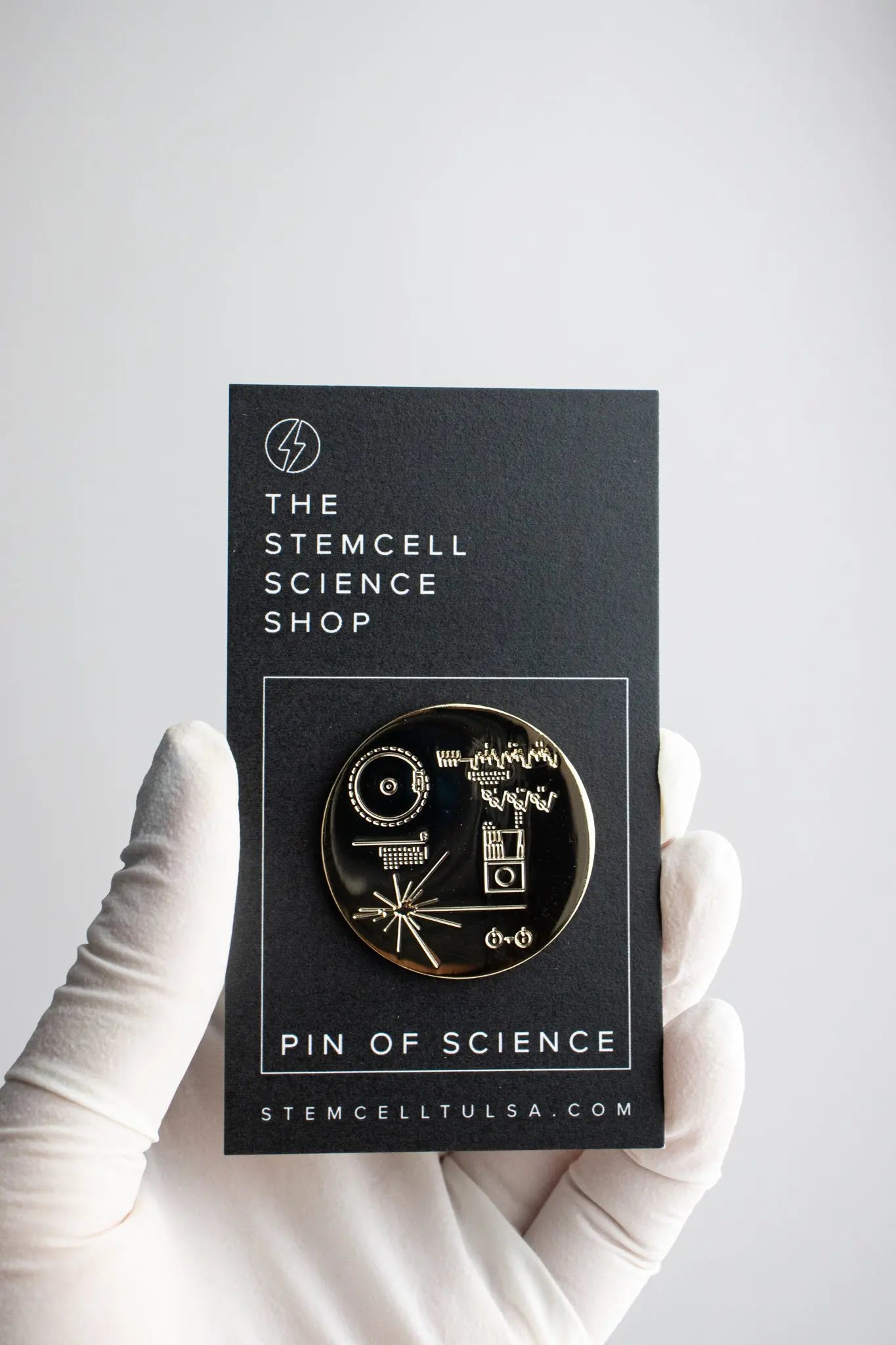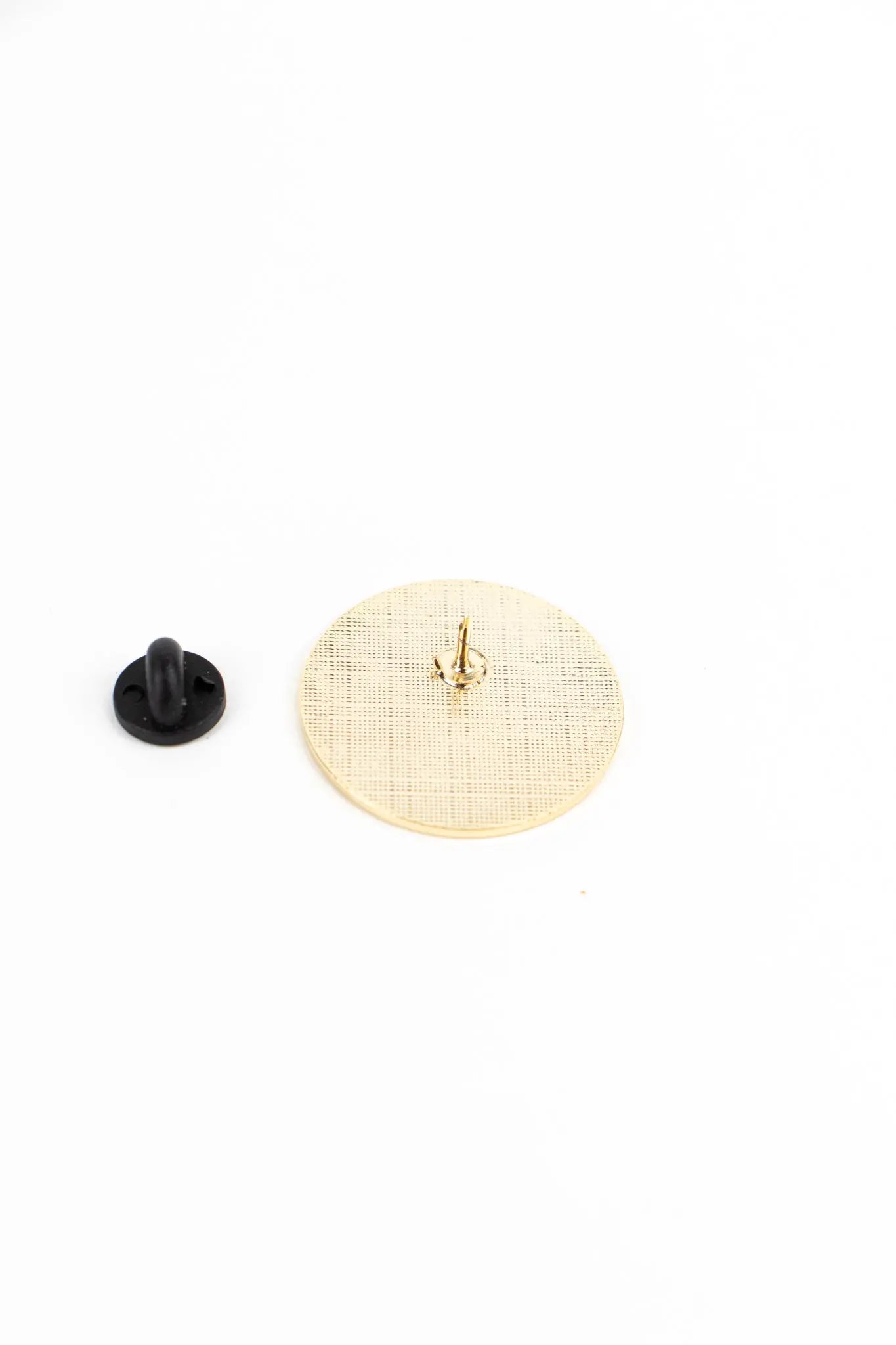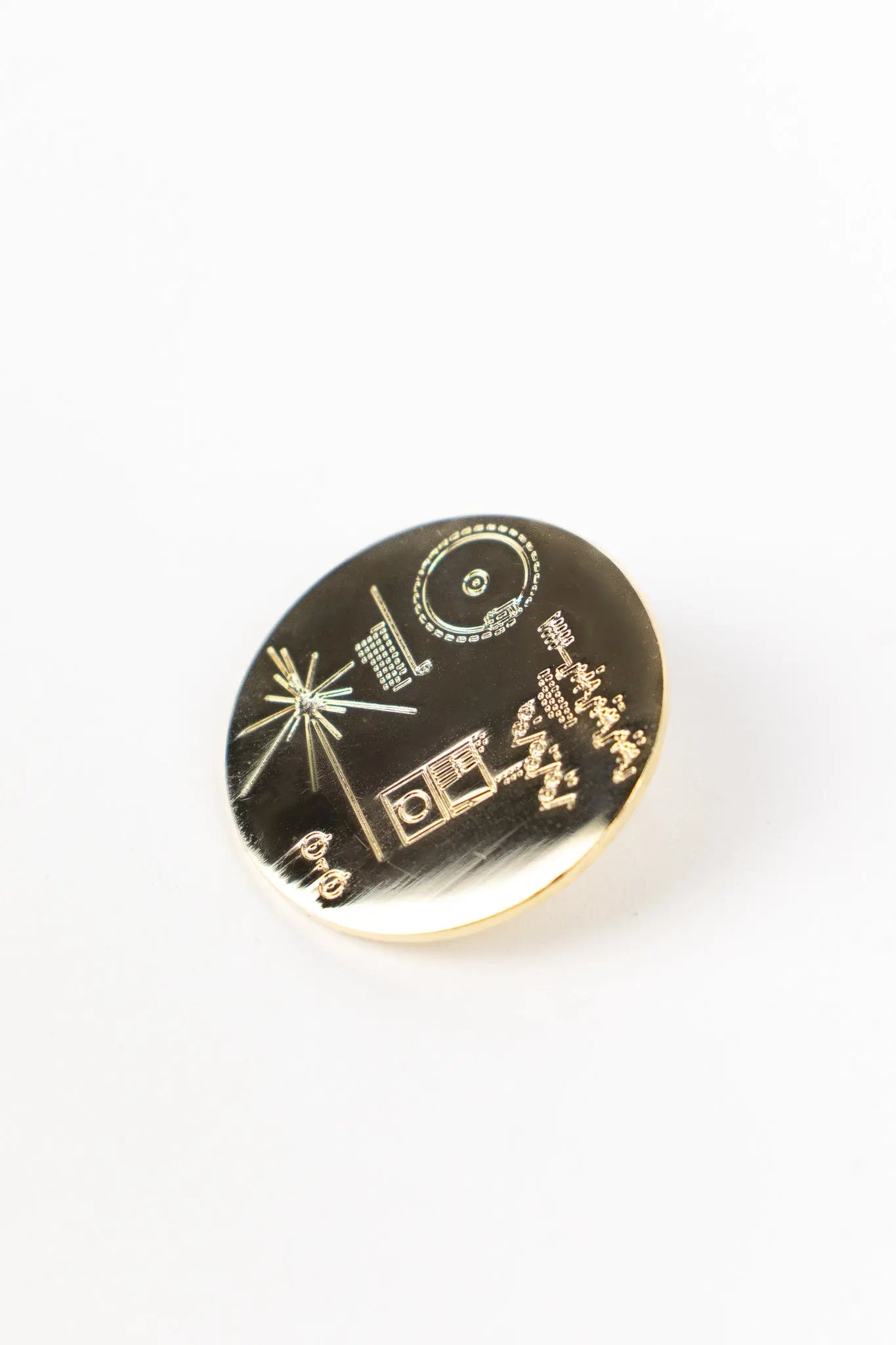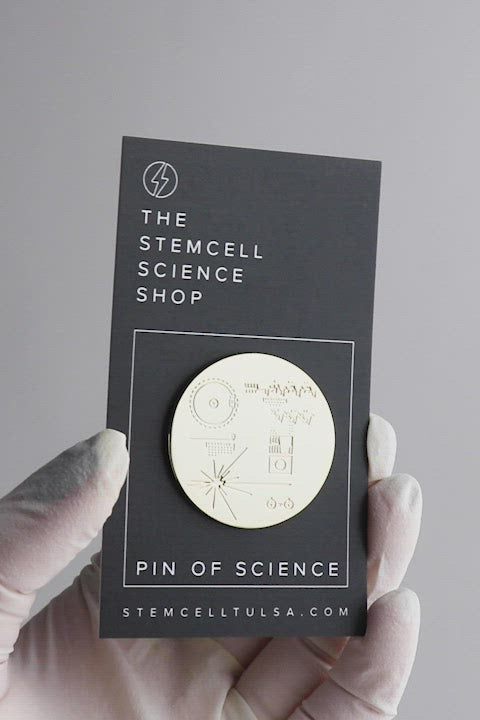Voyager Golden Record Cover Pin
Voyager Golden Record Cover Pin
4.99 / 5.0
(127) 127 total reviews
Be a Voyager, exploring of the universe, while wearing this 1.25" version of the plaque on the Voyager spacecrafts.
What the symbols mean:
In the upper left-hand corner is a drawing of the phonograph record and the stylus carried with it. The stylus is in the correct position to play the record from the beginning. Written around it in binary arithmetic is the correct time of one rotation of the record, 3.6 seconds, expressed in time units of 0.70 billionths of a second, the time period associated with a fundamental transition of the hydrogen atom. The drawing indicates that the record should be played from the outside in. Below this drawing is a side view of the record and stylus, with a binary number giving the time to play one side of the record—about an hour (more precisely, between 53 and 54 minutes).
The information in the upper right-hand portion of the cover is designed to show how pictures are to be constructed from the recorded signals. The top drawing shows the typical signal that occurs at the start of a picture. The picture is made from this signal, which traces the picture as a series of vertical lines, similar to analog television (in which the picture is a series of horizontal lines). Picture lines 1, 2 and 3 are noted in binary numbers, and the duration of one of the "picture lines," about 8 milliseconds, is noted. The drawing immediately below shows how these lines are to be drawn vertically, with staggered "interlace" to give the correct picture rendition. Immediately below this is a drawing of an entire picture raster, showing that there are 512 (29) vertical lines in a complete picture. Immediately below this is a replica of the first picture on the record to permit the recipients to verify that they are decoding the signals correctly. A circle was used in this picture to ensure that the recipients use the correct ratio of horizontal to vertical height in picture reconstruction. Color images were represented by three images in sequence, one each for red, green, and blue components of the image. A color image of the spectrum of the sun was included for calibration purposes.
The drawing in the lower left-hand corner of the cover is the pulsar map previously sent as part of the plaques on Pioneers 10 and 11. It shows the location of the Solar System with respect to 14 pulsars, whose precise periods are given. The drawing containing two circles in the lower right-hand corner is a drawing of the hydrogen atom in its two lowest states, with a connecting line and digit 1 to indicate that the time interval associated with the transition from one state to the other is to be used as the fundamental time scale, both for the time given on the cover and in the decoded pictures.
Grade A: In perfect condition
Grade B: Contains minor imperfections i.e. scratches/smudges
Matter Subscriber Price:
Couldn't load pickup availability
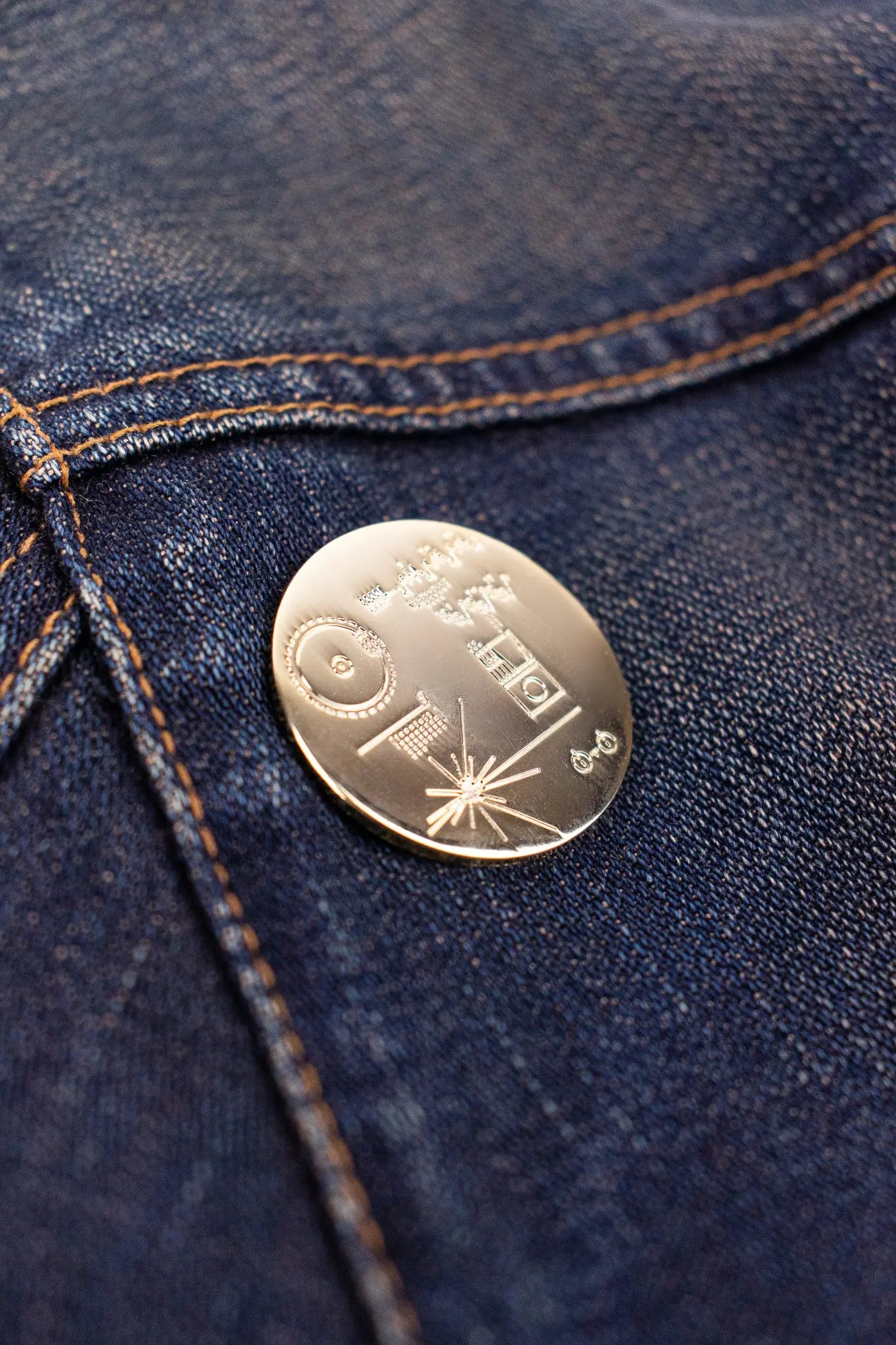
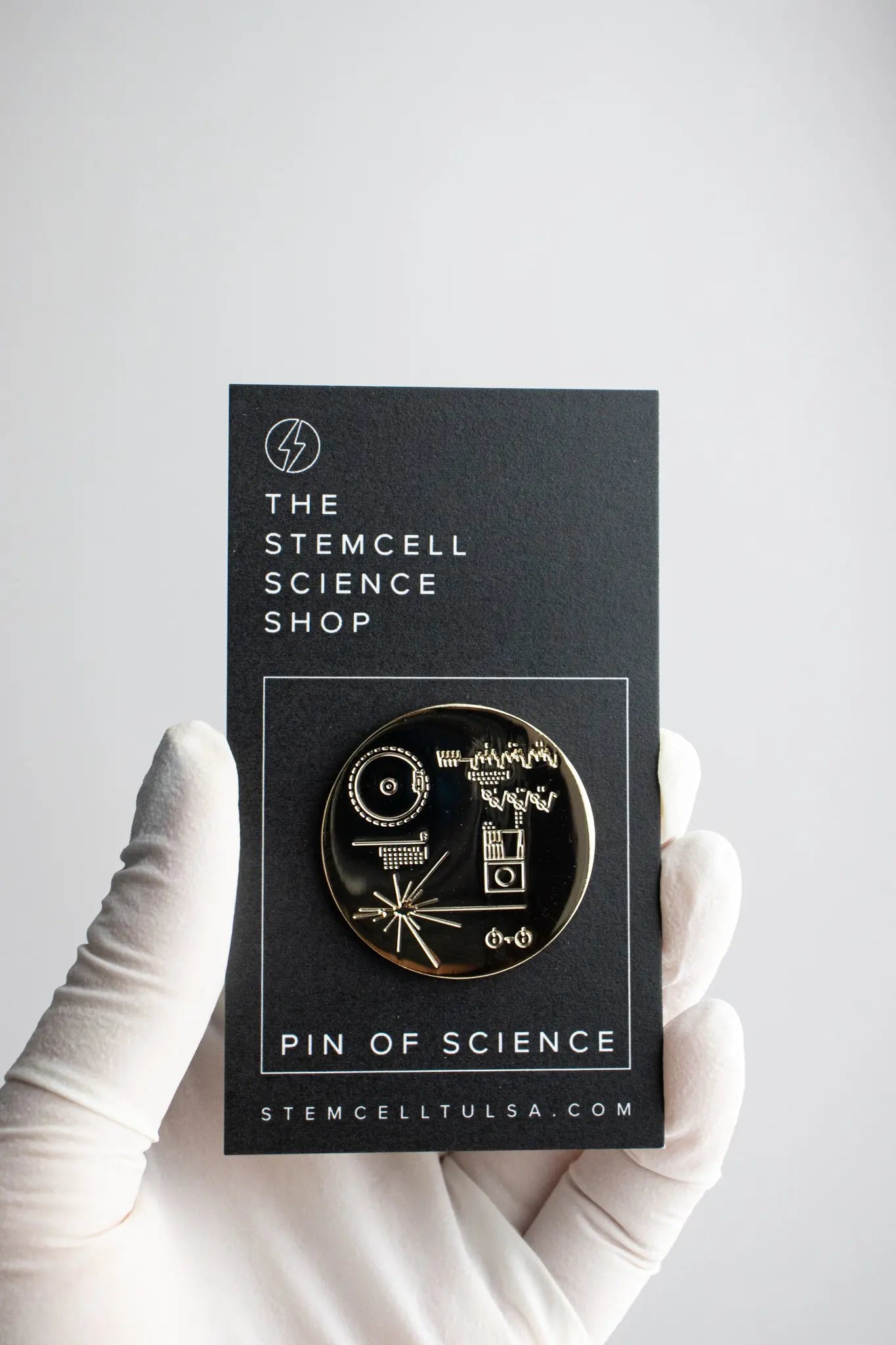
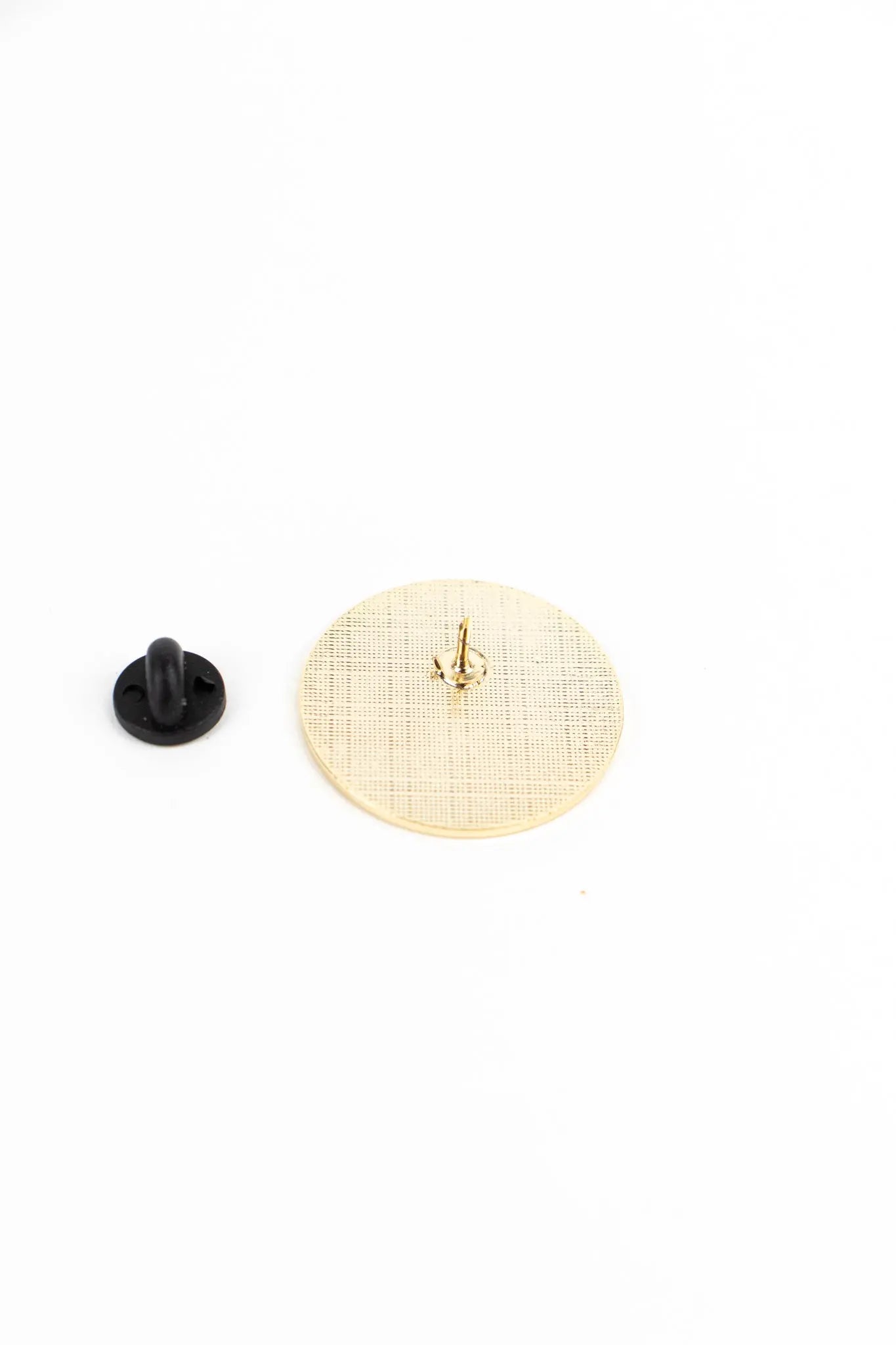
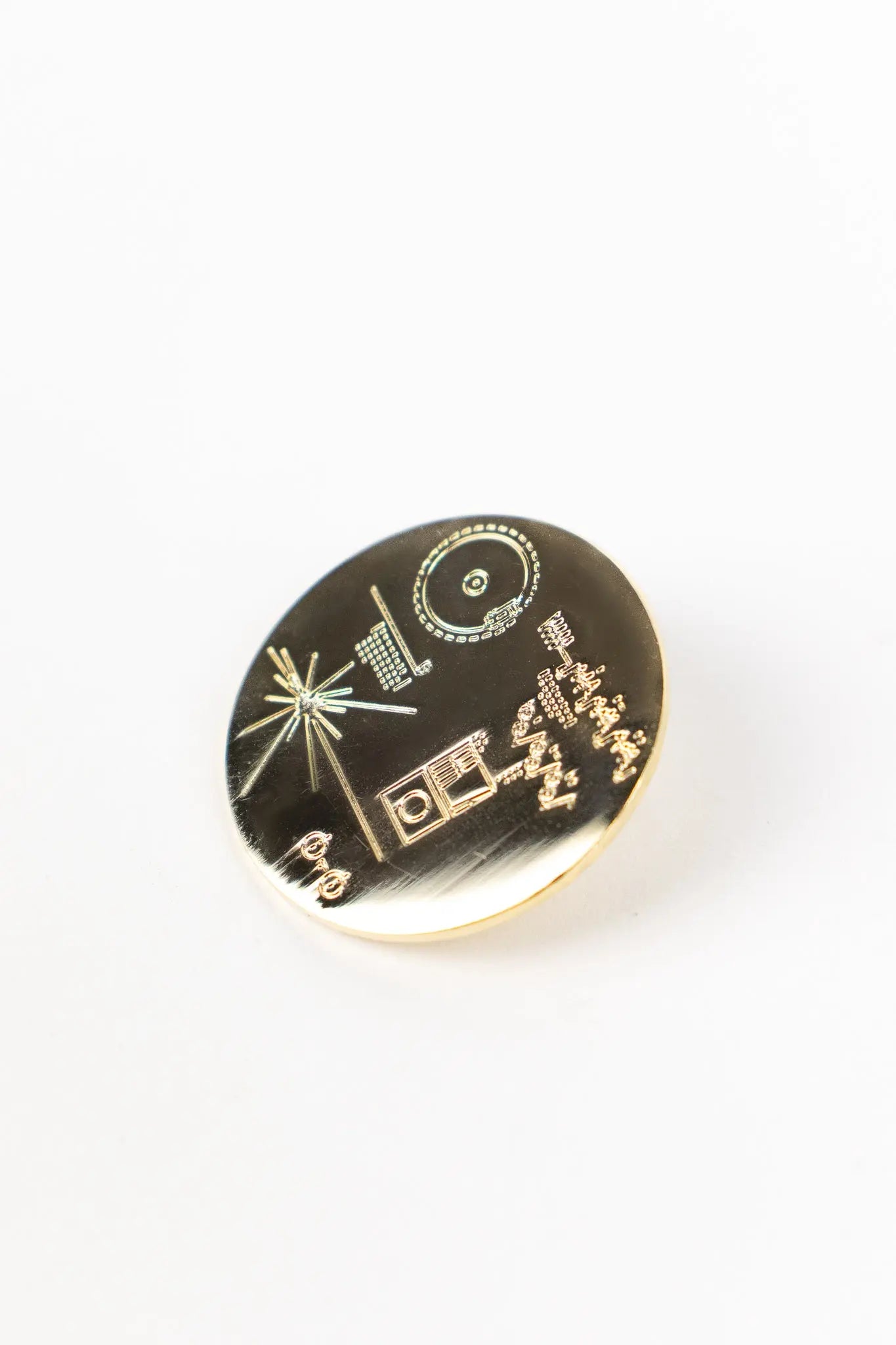
Collections containing this item:
Apparel
|
Outer Space
|
Science Pins
|
Voyager
|
Wholesale Products
|
AUTHENTICITY GUARANTEED
We only list 100% verified authentic items. We work with reputable collectors, and regularly consult with our network of scientists and experts.
-
Free Shipping
Orders ≥$50 qualify for free US shipping
Orders ≥$100 qualify for free global shipping -
Secure Payments
Pay how you like: credit card, PayPal, After Pay, Shop Pay, Venmo, Apple/Google/Meta Pay & crypto
-
Simple Returns
Change your mind? No problem. Enjoy easy returns within 30 days.
Absolutely as pictured and heavyweight. Can't wait to put it on my backpack!
Lauren gave this item 5 stars
Beautiful- it is exactly as pictured
This pin is so pretty! I work at a planetarium and I got this for my lanyard. Love it!
This was a Christmas gift for my husband and he loved it!
A a a a a
similar items_
WE TAKE SCIENCE SERIOUSLY
You deserve better than craft store science products. And we think learning is more impactful when you're holding a tangible piece of what you're learning about. That's why Stemcell exists.
We're dedicated to providing the best scientific products available—whether they're fragments of scientific importance, experimental activities, or just interesting things that scratch your curiosity itch.
With every new product launch, our list of new ideas gets longer rather than shorter. So check in often for our latest projects, and thanks for being a part of our endeavor to make the world a smarter place to live.
Believe in yourself; for everything else, there's science.
— TERRY MUDGE, FOUNDER & SCIENTIFIC DIRECTOR

